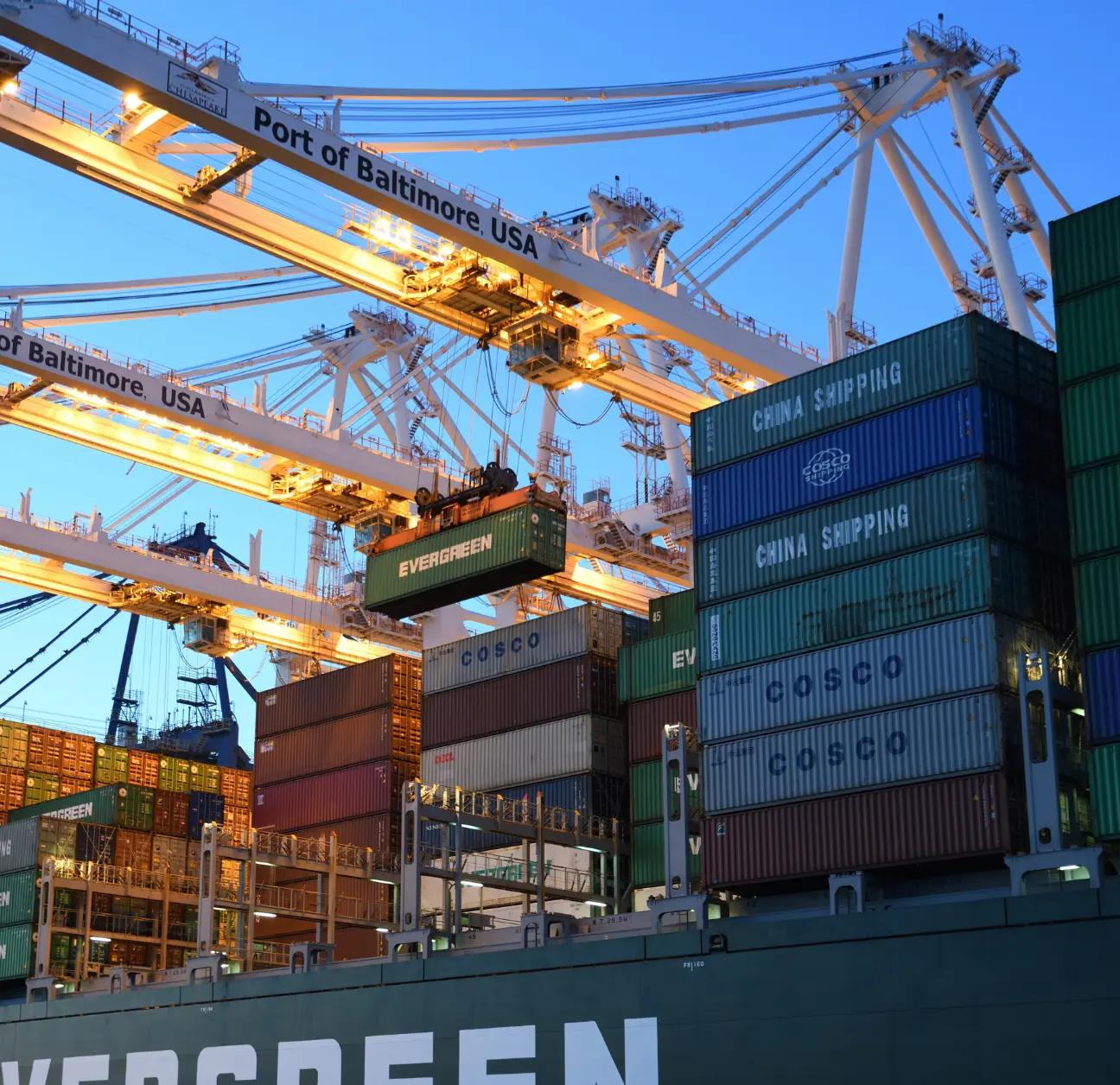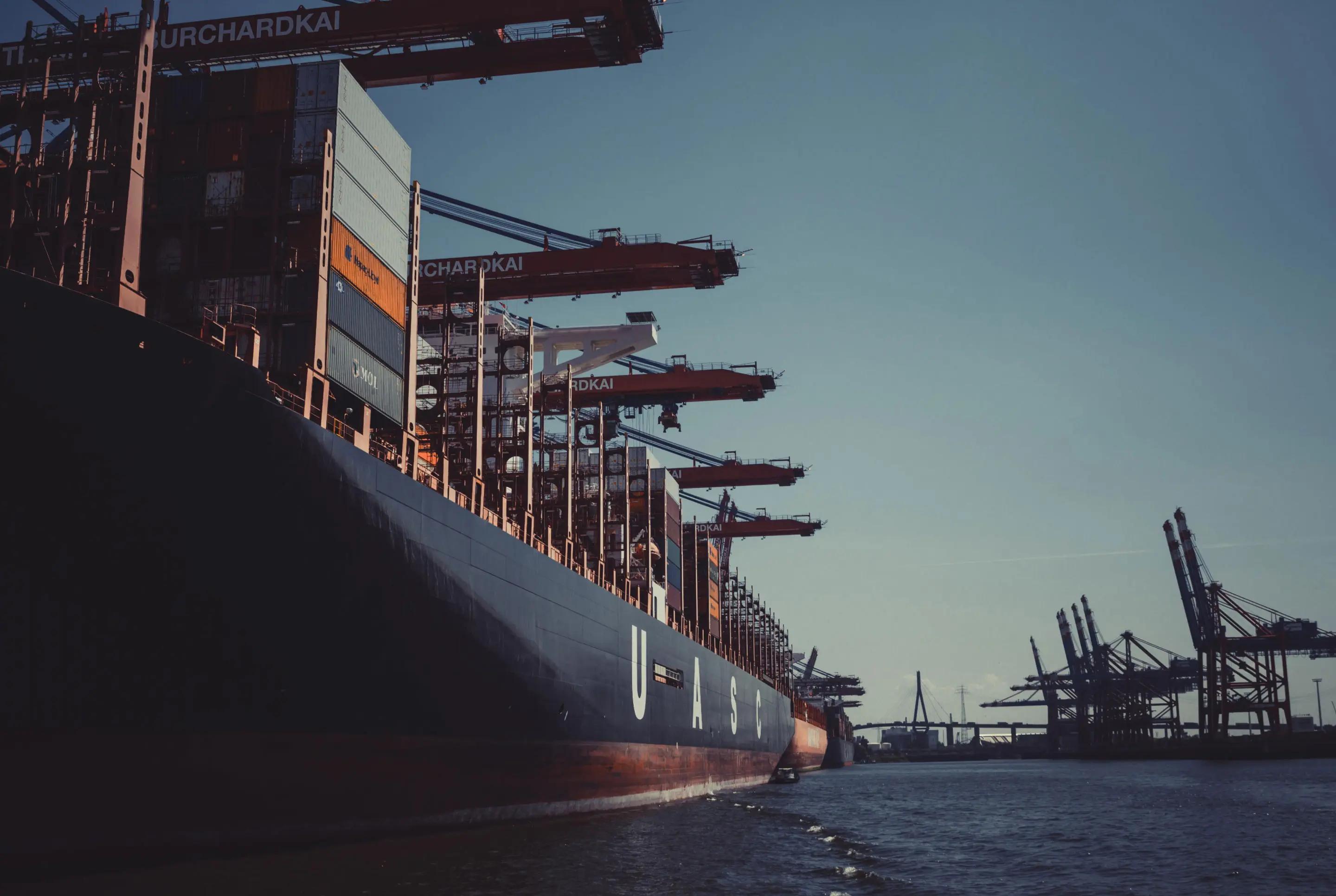Used as part of a company’s day-to-day operations, real-time freight visibility provides a company with the ability to take measures to avoid delays with shipments, identify risks for supply chain shortages, meet compliance requirements and achieve other goals by obtaining a clear, comprehensive view of overall metrics.
End To End Visibility
What is supply chain visibility? End-to-end visibility is a concept in supply chain management that refers to the ability to track and monitor goods, information, and financial flows as they move through the entire supply chain, from suppliers to customers. This includes visibility into inventory levels, production processes, transportation, and delivery times. With end-to-end visibility, companies can gain a comprehensive understanding of their supply chain and identify potential bottlenecks, risks, and opportunities for improvement.
Supply chain visibility is the ability to see and understand what is happening at any given point in the supply chain. This includes tracking inventory levels, production schedules, transportation routes, and delivery times. With greater visibility, companies can better manage their supply chain and make informed decisions about production, inventory management, and customer service.
End-to-end supply chain visibility is particularly important for control in supply chain management. With full visibility into the supply chain, companies can better manage inventory levels, reduce costs, and improve delivery times. For example, if a company can see that a particular supplier is experiencing delays in production, they can adjust their own production schedules to avoid stockouts or delays in delivery to customers.
Demand visibility in the supply chain is also critical. With accurate demand forecasts, companies can optimize production schedules, reduce inventory costs, and improve customer service. For example, if a company can accurately predict demand for a particular product, they can adjust their production schedules to avoid stockouts and ensure that they have enough inventory to meet customer demand.
End-to-end logistics refers to the process of managing the movement of goods, information, and financial flows from suppliers to customers. This includes activities such as transportation, warehousing, inventory management, and order fulfillment. End-to-end logistics is closely tied to end-to-end visibility, as companies need to have a clear understanding of their logistics processes in order to optimize their supply chain and improve customer service.
End-To-End Visibility Market Size
There are many companies offering end-to-end visibility solutions for supply chain management. Here are some examples of supply chain visibility software:
Project44: offers a cloud-based platform that provides real-time visibility into shipments and logistics operations. Their platform integrates with a variety of transportation management systems and carrier networks.
Overhaul: offers a supply chain visibility software that uses machine learning and predictive analytics to provide real-time insights into shipment risk and performance. Their platform helps companies identify and mitigate risks such as theft, damage, and delays.
Vizion: offers a cloud-based platform that provides end-to-end visibility and control over the supply chain. Their platform includes features such as inventory management, order tracking, and supplier collaboration.
Terminal49: offers a supply chain visibility software that provides real-time tracking of ocean freight shipments. Their platform includes features such as vessel tracking, container status updates, and exception alerts.
FourKites: offers a cloud-based platform that provides real-time visibility into transportation and logistics operations. Their platform integrates with a variety of transportation management systems and provides insights into shipment status, location, and estimated delivery times.
GateHouse Maritime: offers a platform to track past, current and future positions of any container or vessel worldwide. Their maritime data foundation consists of 300 billion datapoints and 30+ analysis and predictive models used for data-driven decisions by maritime operators worldwide.
The end-to-end visibility market size is growing rapidly, driven by increasing demand for supply chain optimization and cost reduction. According to a report by MarketsandMarkets, the global market for supply chain visibility software is expected to grow from $11.1 billion in 2020 to $19.7 billion by 2025, at a compound annual growth rate (CAGR) of 12.2%.
End-To-End Visibility Process
What is the meaning of end-to-end visibility ? The end-to-end visibility process is the methodology of tracking and monitoring the entire supply chain, from the initial raw materials supplier to the end customer. The goal is to create transparency across the entire supply chain, which helps identify bottlenecks, improve efficiency, reduce costs, and ensure customer satisfaction.
End-to-end supply chain companies use various technologies such as IoT, RFID, and blockchain to create an integrated and connected supply chain system. By implementing these technologies, companies can track shipments, manage inventory levels, optimize production schedules, and monitor transportation in real-time.
To achieve end-to-end visibility of the supply chain, companies must first identify their supply chain partners, understand their operations, and develop a system for data collection and analysis. This process involves creating a collaborative network that allows for the sharing of data, which is essential for improving efficiency and reducing errors.
The end-to-end value chain is the process of adding value to products or services throughout the entire supply chain. This includes all the activities from sourcing raw materials, manufacturing, distribution, and ultimately, customer delivery. By implementing end-to-end visibility, companies can identify areas of waste or inefficiency in the value chain and optimize processes to reduce costs and improve customer satisfaction.
The end-to-end supply chain process includes several steps such as procurement, production, inventory management, logistics, and customer service. By monitoring each of these steps, companies can gain a comprehensive understanding of the supply chain and identify areas for improvement.
The demand for end-to-end visibility is driven by the need to improve supply chain efficiency, reduce costs, and enhance customer satisfaction. With end-to-end visibility, companies can respond quickly to changing market demands, improve inventory management, and reduce delivery times. The ability to create a more efficient and transparent supply chain is becoming increasingly important in today's global marketplace.
End-To-End Visibility Challenges
Achieving end-to-end visibility in the supply chain can be challenging due to a variety of factors. Here are some of the challenges that companies face when trying to achieve end-to-end visibility:
- Data Quality and Integration: Supply chain visibility requires access to accurate and timely data from all supply chain partners. However, data quality and integration can be a major challenge, as many partners may use different systems and formats for storing and sharing data.
- System Complexity: Many supply chains are complex and involve multiple partners, modes of transportation, and systems. Integrating all of these components into a single system can be difficult and require significant resources.
- Cost: Implementing an end-to-end visibility solution can be expensive, particularly for small and medium-sized enterprises (SMEs) that may not have the resources to invest in new technologies or systems.
- Security and Privacy: Sharing sensitive supply chain data with multiple partners can create security and privacy concerns. Companies need to implement robust security measures to protect data and ensure compliance with regulations such as GDPR.
- Real-time Visibility: Real-time visibility is essential for effective supply chain management, but achieving it can be challenging due to the complexity of the supply chain and the limitations of existing technologies.
Challenges of real-time visibility include data accuracy, technology limitations, and system complexity. Achieving real-time visibility requires a robust and integrated supply chain system that can collect and analyze data from multiple sources in real-time. This can be difficult to achieve, particularly for companies with complex supply chains or limited resources.
Benefits Of End-To-End Visibility
How does improved supply chain visibility improve the planning process? End-to-end visibility in the supply chain has numerous benefits for companies, including:
- Improved Efficiency: With end-to-end visibility, companies can optimize their supply chain processes and reduce costs by identifying areas for improvement and making informed decisions.
- Better Collaboration: Supply chain visibility allows partners to collaborate more effectively, sharing data and insights to improve overall performance.
- Reduced Risk: End-to-end visibility enables companies to identify and mitigate risks in the supply chain, reducing the likelihood of disruptions and improving overall resilience.
- Improved Customer Satisfaction: By having a clear view of the entire supply chain, companies can respond quickly to changing customer demands, improving customer satisfaction and loyalty.
- Improved supply chain visibility also improves the planning process by providing real-time data and insights to support decision-making. Companies can use this data to optimize inventory levels, manage lead times, and identify potential bottlenecks in the supply chain. This helps to reduce the cost of inventory holding, reduce stockouts and backorders, and improve overall efficiency.
At Chain.io, we understand the importance of end-to-end visibility in the supply chain. Our cloud-based integration platform provides a single, unified platform for managing supply chain data, allowing you to achieve complete visibility and control over your supply chain.
With Chain.io, you can easily integrate all of your existing systems and partners, allowing you to share data and collaborate more effectively. This enhanced collaboration leads to better decision-making, improved efficiency, and reduced risk. By using our platform, you can optimize your supply chain processes, reduce costs, and improve customer satisfaction. With our platform, you can achieve end-to-end supply chain visibility in a matter of weeks, rather than months.
At Chain.io, we are committed to helping you achieve your supply chain goals. Our platform is designed to grow with your business, allowing you to easily scale up or down as needed. With Chain.io, you can be confident that you have the tools you need to optimize your supply chain and stay ahead of the competition.







